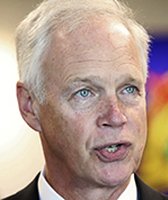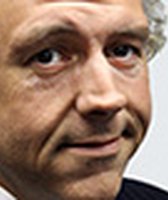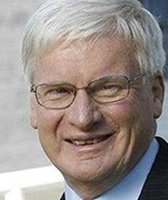Stand up for the facts!
Our only agenda is to publish the truth so you can be an informed participant in democracy.
We need your help.
I would like to contribute
Milwaukee alderman says fluoride in toothpaste is a poison
The debate over the use of fluoride in Milwaukee’s water supply was pretty much a one day affair. Led by Ald. Jim Bohl, in that short time frame, the public heard a barrage of unusual claims about their water, rat poison, and even their toothpaste.
Indeed, we thought the debate over fluoridation of water had long been settled.
Since 1953, the Milwaukee Water Works has added a tiny amount of fluoride to the drinking water. Many cities have done this for years to boost dental hygiene and the U.S. Centers for Disease Control and Prevention considers it one of the most important public health efforts of the past 50 years.
Some, including Bohl, have criticized the practice.
They raise a variety of arguments including that the government is introducing poison into the water supply. Bohl tried unsuccessfully to get the Common Council to end water fluoridation in Milwaukee, arguing the money saved -- about $540,000 a year -- would be better used for dental programs in the central city.
Bohl said that fluoride was a dangerous chemical, originally created for use as rat poison. Now, not only is it in the water, but also consumer products including toothpaste, he said.
"We all know that we do not have children or anyone swallow toothpaste," Bohl said at a City Hall news conference May 29, cited in this report on WUWM. "And the reason we don’t do that is because of the poison substance of fluoride. If fluoride was such an effective and non-harmful substance, why would we not encourage everyone to swallow their toothpaste?"
Bohl elaborated in a May 30 interview with the Journal Sentinel editorial board: "We’re talking about a substance that’s rated as more toxic than lead."
That got our attention. Poison in our toothpaste? Are folks putting themselves in danger when they polish their pearly whites?
Some -- but not all -- toothpaste contains fluoride, a substance known to prevent cavities. If it’s ingested alone, fluoride can cause serious illness in humans. So, toothpaste is regulated by the U.S. Food and Drug Administration, which limits the amount of fluoride allowed in the product.
That’s why tubes of toothpaste with fluoride carry this warning label: "If you accidentally swallow more than used for brushing, seek professional assistance or contact a Poison Control Center immediately."
Apparently Bohl is not the only one who reads the fine print on their toothpaste tubes.
Flouride calls are relatively common at the Wisconsin Poison Center, in part because of the warning label, said manager Cathy Smith. The agency, part of Children’s Hospital of Wisconsin, handles calls from around the state.
Experts who field the calls determine the brand and type of toothpaste used and consult database to determine the concentration of fluoride in that particular product, Smith said. They then factor in the age and weight of the human and see if there’s a problem.
And here’s where the scary talk from Bohl meets reality: Toothpaste doesn’t make people sick.
"We have never, ever had a person who has ingested toothpaste, even a child, who has been referred to the emergency room," Smith said.
How much toothpaste would you have to swallow before you’d be considered in any sort of trouble? A 30-pound child would have to ingest an entire six-ounce tube, according to the Poison Center.
"Kids, number one, don’t eat that much," Smith said. " And, number two, they’d be puking it up if they did."
In part, that’s because the product includes cleansers, detergents and other substances that would disagree with your stomach.
By the Poison Center’s calculations, an adult would have to swallow about four tubes of toothpaste before they’d be a candidate for the E.R.
We checked with Froedtert Hospital, which has one of the busiest emergency rooms in the state.
Spokeswoman Kathleen Sieja said that the hospital didn’t track toothpaste-related ailments, but said she’d check with a long-time doctor there to see if he had heard of anything.
Said Sieja: "The emergency dept physician responded that in his 17 years, he has never taken care of a fluoride overdose."
We also checked with a few other sources, including toothpaste manufacturers, and found there’s little for people to worry about.
"The amount of fluoride found in toothpaste is usually not swallowed in large enough amounts to cause harm," said an article on the New York Times Health section about how people should handle a possible fluoride overdose.
And here’s what Proctor and Gamble, the maker of Crest, says about toothpaste dangers:
"Occasionally swallowing a small amount of toothpaste is not a safety risk for adults or children. Our label cautions against swallowing because eating a large amount of toothpaste would be expected to cause nausea, vomiting or diarrhea. Certain ingredients that are common in toothpastes have the potential to cause stomach irritation if enough is swallowed."
Finally, there’s the question of what is a poison. Here’s what a couple of dictionaries say:
-- A substance with an inherent property that tends to destroy life or impair health. Dictionary.com
-- A substance that causes injury, illness, or death, especially by chemical means. The Free Dictionary.com
-- A substance that through its chemical action usually kills, injures, or impairs an organism. Merriam-Webster.com
A tube of toothpaste doesn’t seem to fit any of these definitions.
We asked Bohl why he called fluoride a poison, and he sent us an email with links to more than a dozen websites that "spell out the toxic nature of the substance."
Some are from government sources, such as the Environmental Protection Agency. Others were from groups opposed to fluoride, even one by a blogger who writes about "Energy healing program to boost the human aura, increase athletic performance and life extension."
Bohl turned to the dictionary as well -- to define the word toxic: 1) poisonous.
2. manifesting the symptoms of severe poisoning. The FreeDictionary.com.
Finally, we asked the Poison Center: Is fluoride a poison? Smith’s answer: "It can be toxic in certain situations."
So, with this item adequately scrubbed, let’s put it to bed.
In raising a slew of concerns about the use of fluoride in Milwaukee’s drinking water, Bohl said the public was being exposed to a dangerous chemical -- he called it a poison -- that is regulated by the feds.
Many brands of toothpaste do contain fluoride, which is regulated by the feds. But saying toothpaste contains a poison, Bohl overstates his case and the alarm to the public. People generally don’t eat and swallow toothpaste. And if they did, it would take a massive amount to be at risk from fluoride poisoning. In fact, experts say a kid would vomit out the toothpaste long before that point.
We rate Bohl’s claim Mostly False.
Our Sources
WUWM-FM (89.7) "Alderman calls to end fluoridation of Milwaukee’s drink water; Health leaders disagree," May 30, 2012
WTMJ-AM (620), "Dentists argue merits of Milwaukee’s fluoridated water," May 23, 2012
PolitiFact Florida, "Truth about flouride does not include Nazi myth," Oct. 6, 2011
Milwaukee Journal Sentinel editorial board interview, Ald. Jim Bohl, May 30, 2012
Emails, Ald. Jim Bohl, July 3, 2012
U.S. Centers for Disease Control and Prevention on Fluoridation
Telephone interview, Cathy Smith, manager, Wisconsin Poison Center, June 18, July 3, 2012
Emails, Kathleen Sieja, spokeswoman, Froedtert Hospital, June 18, 19, 2012
Milwaukee Journal Sentinel, "Alderman calls for ending fluoridation of Milwaukee’s drinking water," May 29, 2012
Milwaukee Journal Sentinel, "Alderman puts city’s fluoridated water on trial," May 31, 2012
US Food and Drug Administration, Federal Register regulations governing toothpaste
Crest product web site
Dictionary.com
The Free Dictionary.com
Merriam-Webster.com
Browse the Truth-O-Meter
More by James B. Nelson
Milwaukee alderman says fluoride in toothpaste is a poison
Support independent fact-checking.
Become a member!
In a world of wild talk and fake news, help us stand up for the facts.



















































